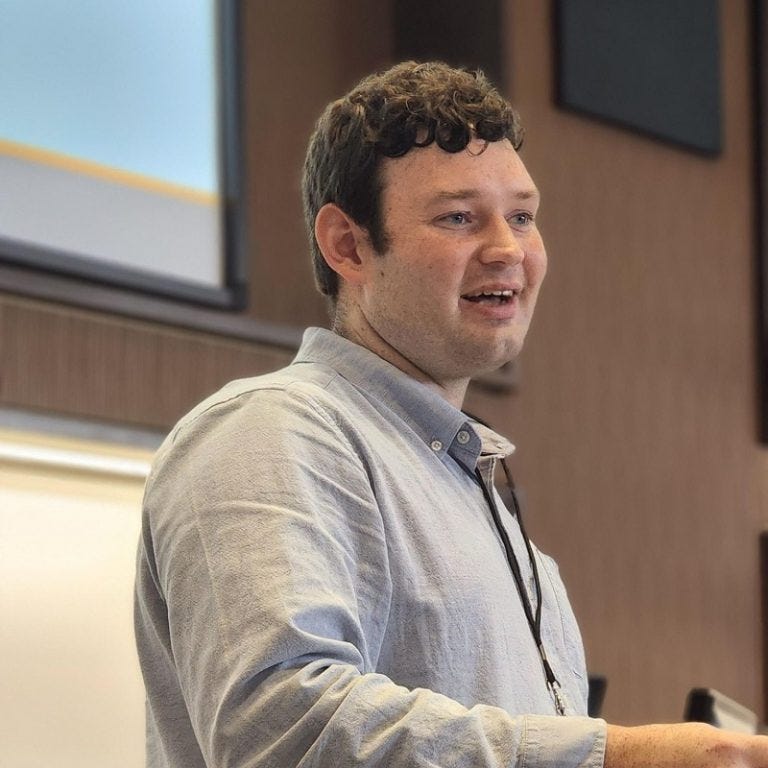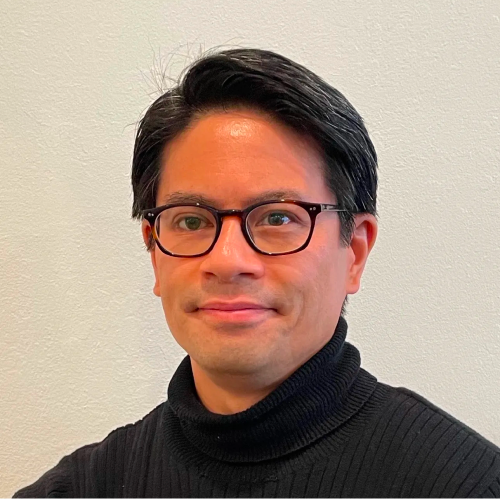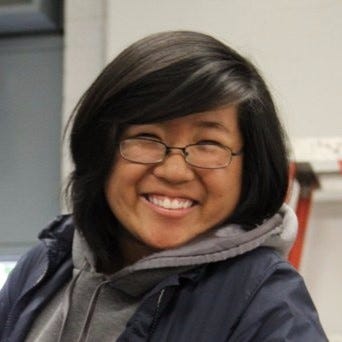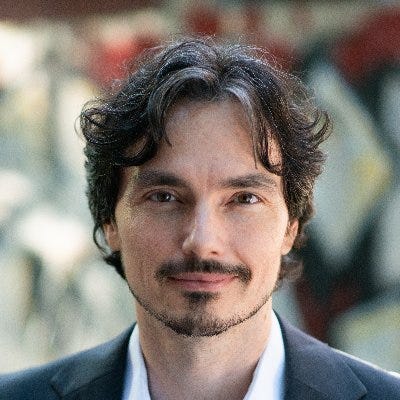Meet the Brains Fellows
We’re excited to introduce the first class of Brains Fellows!
If you find any of their ideas particularly exciting or intriguing, please get in touch with them via LinkedIn (linked to in their names) or email brains@spec.tech and we’ll route you correctly.
Aaron Tohuvavohu
Idea
Aaron aims to dramatically expand our cosmic horizons by building a future of abundant, accessible, and extremely capable space telescopes at larger scales and lower costs than ever before. Humanity's tools to explore the vast Universe beyond our home planet are limited to a small handful of aging telescopes. Hubble, launched decades ago, remains best in class. Development timescales for space-based astronomy have stretched longer than a generation, limiting discovery and suffocating the imagination of scientists and youth. A brighter future of abundant space telescopes is possible! Standardized, high performance telescopes developed iteratively and at scale will rapidly accelerate conventional timelines, democratize access to orbital-class astronomy, and unlock humanity’s unbounded potential for discovery.
About Aaron
Aaron is an astrophysicist, studying the formation of black holes, relativistic cosmic explosions, and other rich astrophysical laboratories for new physics. He has operated space telescopes for NASA as an observatory scientist, and now dreams up new space telescopes for both breakthrough science and scale production. Aaron is the PI and founder of the Space Telescope Development Lab at the University of Toronto where he and his team design, build, and fly novel astronomy-grade space systems, with rapid iterative development.
He lives in a barn with three horses, two dogs, 15 chickens, and his (human) partner.
Anna Madlener
Idea
Anna is working on fit-for-purpose robotic and measurement tools for monitoring, reporting and verification (MRV) of ocean-based carbon removal approaches. While sensors and oceanographic models have seen large investments, there has been less focus on the integrated platforms that will actually be deployed in the ocean. After working on scalable robotic platforms for MRV within a startup studio during the past year, Anna aims at leveraging existing science and observational tools to enable broadly trusted, innovative, and coordinated data collection for marine carbon removal.
About Anna
A marine robotics engineer, Anna Madlener is passionate about technological solutions that contribute to solving the climate crisis. With a vivid passion for the ocean, she has dedicated her professional time to ocean-based climate solutions, in particular to the question of how best to monitor marine carbon dioxide removal approaches. Anna is currently an MRV Fellow at the Carbon to Sea Initiative, a non-profit focusing on evaluating Ocean Alkalinity Enhancement as a viable pathway to repair historic carbon pollution. She is also a co-host of the Plan Sea Podcast, which discusses ocean-based climate solutions.
Beck Brachman
Idea
Beck is building massively scalable experimental and computational immunomics tools to enable the reconstruction of repertoire-level immune histories to uncover the causes of many chronic diseases. The immune system stores a detailed record of all of our immune exposures over our lifetime (infections, allergies, cancers, autoimmunity); including hidden causes of disease. Currently, we can neither read nor decipher this massive archive. If we could access and translate this immunological record, it might be possible to identify unknown causes of chronic disease, leading to new treatments and cures.
About Beck
Dr. Beck Brachman is a neuroscientist, neuroimmunologist, and pioneer in the field of preventative psychopharmacology. She works on mapping the immune response in chronic disease and designing preventative therapeutics for psychiatric disorders. Dr. Brachman is a Visiting Fellow at Cornell Tech and supported by Schmidt Futures & Convergent Research. Brachman obtained her PhD in Neuroscience from Columbia University, and was a fellow at the National Institutes of Health. She is a TED Fellow, Helena Brain Trust member, and former Runway Fellow and NYCEDC Entrepreneurship Lab Fellow. Brachman's research has been featured in numerous media outlets, including The Atlantic, WIRED, Business Insider, and NPR.
Danie Potocek
Idea
Danie is addressing the climate problems created by methane through a coordinated effort to expand monitoring networks, modeling, and processes-based science. Methane is a short-lived but potent greenhouse gas that could create self-enforcing feedback loops, however the rising concentration currently lacks scientific consensus. This work is critical to ensure that natural emissions of methane are accurately represented in global budgets, future climate projections, and international policy frameworks.
About Danie
Dr. Danie Potocek is a natural system scientist at Spark Climate Solutions focused on natural emissions of short-lived climate forcers. A biogeochemist by training, she received her PhD in Earth Sciences from the University of Southern California and completed a postdoc at Caltech. Her previous research focused on trace metal and cofactor cycling in natural systems and the role they played in Earth’s critical biological innovations. She has 6+ years of experience in environmental and climate policy consulting at the local, state, and Federal levels. In her spare time you can find her running, propagating plants, or exploring the Chesapeake Bay and the greater DC area with her young family.
Dustin Gilmer
Idea
Dustin is building hierarchical, heterogenous materials with properties that far exceed the homogenous bulk materials like aluminum and steel that dominate engineering applications. Materials have shaped the development of civilization from the bronze age to the silicon age, and new heterogenous materials, inspired by how nature makes things from wood to shells, could enable new ways of forming components with unparalleled structure and function. Unlocking these materials requires the intersection of many disparate fields and new manufacturing methods.
About Dustin
Dr. Dustin Gilmer is a research fellow at the UT-Oak Ridge Innovation Institute, a joint institute between the University of Tennessee and Oak Ridge National Laboratory. His studies at the UT-Oak Ridge Innovation Institute focus on Extreme Environmental Materials Processing (EEMP). Dustin received his Ph.D. in Energy Science and Engineering from the University of Tennessee’s Bredesen Center in 2022. During his Ph.D., his studies focused on advanced manufacturing techniques and the interface of chemistry, materials science, energy, and manufacturing utilizing tools such as additive manufacturing, synthesis, and data science. Dustin received his B.S. in Physics from East Tennessee State University.
Felix Lam
Idea
Felix is enabling us to turn atmospheric carbon dioxide into the critical chemicals that we currently make from petroleum. Biology has evolved efficient and uniform ways to fix CO2 but still has several barriers before we can use it at scale. The program will focus on the tools to scale and combine the major biological carbon utilization approaches:
Explanted pathways, where enzymes operate free of the cell and are subjected only to thermodynamics and protein stability
Growth-suppressed fermentation, where microbes are induced to stay productive without resource-depleting cell division
About Felix
Dr. Felix Lam is a microbial scientist focused on the production of high footprint chemicals from next-generation renewable feedstocks. Over a decade in academic research, he has led and published high profile advances in areas ranging from toxicity tolerance and cellulosic fermentation to transcriptional engineering. Most recently, he spearheaded efforts to commercialize a bioprocess producing diesel/jet fuel from CO2. Felix has a Ph.D. in Biophysics from UCSF and undergraduate degrees in Mechanical Engineering and Biology from MIT. He currently lives in San Francisco and loves running, discovering new food, and exploring amusement parks with his young daughter.
Manjari Narayan
Idea
Manjari is addressing the more than 90% attrition rate in bringing new therapeutics to market, often linked to mistakes in discovery, preclinical stages and patient selection. A key challenge is improving predictive validity of early in-vitro, in-vivo or human biomedical findings across the translational pipeline. Causal epidemiology developed the target trial emulation framework and deployed it to increase the validity of real world evidence. Increasing predictive validity in biopharma through similar innovations will require collaboration among drug developers, life scientists, clinicians, and experts in causal AI and experimental design.
About Manjari
Dr. Manjari Narayan is a statistical scientist who has worked in neuroscience, psychiatry, pediatrics and protein design, across academia (Stanford, Rice) and industry (Dyno Therapeutics). She uses statistical learning and causal inference to understand and intervene on complex systems found in biology and medicine. She holds a PhD in Electrical Engineering from Rice University; her work received the ENAR distinguished paper award in Biostatistics. You can find her on Twitter as @Neurostats.
Michelle Wang
Idea
Michelle is building 3D-printed, rare-earth-free permanent magnets that harness the advantages of additive manufacturing to enable fine control of grain orientation and magnetic material density to produce exotic magnetic structures. These magnets can enable new kinds of motors, sensors, and power electronics components which were not previously possible using current magnet manufacturing methods.
About Michelle
Michelle is an electrical engineer with a deep interest in energy and materials manufacturing. She previously worked on magnetic nanodrones, immunotherapy, ocean mapping robots, solar inverters, electric vehicles, and sensory organs for cyborg artists. She received her BSc in Electrical Engineering from Caltech in 2018 and was awarded the Thomas J. Watson Fellowship. She is currently exploring the future of the power grid at South Park Commons.
Patrick Mineault
Idea
Patrick aims to build software models of the entire brain powered by recent trends in large language models and ubiquitous brain data. Despite billions of dollars of investments, breakthrough treatments for psychiatric disorders and neurological diseases are few and far between. His thesis is that with good models of healthy brains, we could simply bypass the diseased tissue, performing the necessary computation in silico. The models could then serve as universal translators for brain activity, vastly accelerating fundamental and applied neuroscience research.
About Patrick
Dr. Patrick Mineault is a NeuroAI researcher. He takes inspiration from the brain to make artificial intelligence better, and uses AI to advance brain science. He is a senior machine learning scientist at Mila, the Quebec AI institute. Previously, he was the founding CTO of Neuromatch, a data scientist at Google, and a research scientist at Meta focused on brain computer interfaces. He holds a PhD in computational neuroscience from McGill University.
Robb Stewart
Idea
Robb is leveraging advances in fuels, robotics, and materials to reorganize the systems inside of a nuclear plant to exploit modular construction techniques and reduce construction cost and risk. Today’s nuclear plants take 10 years and >$10B to build, and most new reactor concepts share difficult-to-construct features with traditional nuclear plants. Cost overruns are common for large infrastructure projects but not for flat, modular buildings. There are large (warehouses) and expensive (data centers) projects that have consistently short build times. It should be possible to accomplish the same thing for nuclear power plants.
About Robb
Dr. W. Robb Stewart co-invented MIGHTR, a novel nuclear reactor designed to exploit modular construction techniques to reduce cost and risk of nuclear construction. MIGHTR is the subject of a DOE funded research consortium including MIT and five other organizations. He holds a PhD in Nuclear Science and Engineering from MIT where his research evaluated the economic value and risk of advanced nuclear technology. Previously, he worked for GE Global Research where he led research programs in experimental heat transfer and fleet management for commercial jet engines.
Sarah Hunt
Idea
Sarah is working to significantly increase the performance of biobased materials in energy devices, while addressing barriers to scale, which will open the door to creating fully circular, extremely low-cost devices. Recently, there has been tremendous progress in developing renewable materials for batteries, solar panels, and electronics more broadly. However, most demonstrated prototypes have extremely limited performance characteristics.
About Sarah
Dr. Sarah Hunt is a scientist who loves imagining a more sustainable world and just society. Her background includes a B.S. in chemical engineering from Caltech, a Ph.D. in biomedical engineering from the University of Minnesota, and six years building programs and managing teams in the STEM education non-profit sector. She currently works as a post-doctoral researcher at CUNY’s Advanced Science Research Center (ASRC), investigating protein stabilization for compatibility with polymer processing. She lives in Brooklyn, New York, and enjoys exploring NYC parks, baking bread, and hosting game nights with friends.
Stephen Lantin
Idea
Stephen is addressing the high resource usage of outdoor agriculture, a problem worsened by climate change and population growth. Controlled environment agriculture (CEA) offers a solution with far higher land and water efficiencies, as well as consistent harvests; however, its adoption is slowed by high electricity, labor, and capital costs, coupled with competition from subsidized field agriculture. Derisking specialized plant breeding approaches for CEA and producing datasets for low-cost automation design may allow palatable food to be grown anywhere economically—including conflict zones, naval ships, and outer space.
About Stephen
Stephen Lantin is a PhD Candidate and NASA Space Technology Graduate Fellow at the University of Florida. His research focuses on developing bioregenerative life support systems for Earth and space applications. Previously, Stephen has worked on electric propulsion for X-planes, prototyped hardware for interstellar space biology concepts, and worked on various ground testing, spaceflight, and lunar surface experiments at NASA.
Tim McGee
Idea
Tim is building a new way of manufacturing fibers and other materials that could enable previously impossible properties such as biological activity for sensing and filtering or continuously variable properties that could enable new applications. The new approach, Stimuli Responsive Manufacturing, is based on the extracellular manufacturing processes of organisms like spiders that are able to create materials with properties that are hard or impossible to replicate with current manufacturing techniques.
About Tim
Tim McGee’s work has focused on material, manufacturing and product innovation at the intersection of biology, design, and engineering. My scientific background includes work in genetics, genomics, biomaterials, ecology, and microbiology. My consulting work has spanned industries from aerospace and synthetic biology, to retail and materials science. My recent work has been identifying emerging technologies that leverage advances in biology to create disruptive products and services that can reshape our daily experiences as well as our industrial systems.
William Stoy
Idea
William is borrowing techniques from the pharmaceutical industry to develop a fully automated platform for discovering superconductors and other materials. An ideal superconductor could revolutionize power transmission, quantum computing, and medical imaging. However, current superconductors are either brittle and are very difficult to form into wires or are only superconductive at extremely low temperatures. Without a predictive theory for this phenomenon, we are left to experimentally discover new materials but several engineering bottlenecks have slowed the rate of synthesis and discovery of new superconducting materials. The pharmaceutical industry has many techniques to overcome these challenges that haven’t been applied to materials yet.
About William
Dr. William Stoy’s research has focused on engineering design for high throughput automation in basic neuroscience and the pharmaceutical industry. His efforts have led to walk-away automation of the traditionally painstaking and manual process of patch clamping in primary neuron cultures and in vivo. This work created a pipeline that allows drug companies to screen large libraries of drugs on living brain tissue and allows neuroscientists to design new fluorescent proteins for use in the brain. His postdoctoral work has focused on the creation of a microfluidic device that improves protein screening throughput by a factor of 1000 by miniaturizing large robotic platforms into a lab-on-a-chip. Moving forward, He will apply these techniques of miniaturization and automation to solid-state material discovery for superconductors, batteries, and solar cells.
Will Vega-Brown
Idea
Will is executing on the insight that rather than automate existing construction techniques, we should codesign buildings alongside the robots that will fabricate them. In the past fifty years, automation helped US labor productivity double, but had almost no impact on the construction sector, where productivity fell by 40%. Because modern construction processes are heavily interconnected and optimized for human labor, they are difficult to automate individually. Buildings specifically designed for robotic construction could enable productivity leaps and enable new building designs that are more cost-effective, energy efficient, and aesthetic.
About Will
Dr. Will Vega-Brown is an engineer, researcher, and entrepreneur who works at the intersection of robotics, artificial intelligence, and industry. He is a co-founder of and CTO at Tagup, where he leads a team building AI-driven products for industrial and defense applications, including using reinforcement learning to reduce the energy consumed by commercial HVAC equipment and using Bayesian simulation to improve military logistics. He holds a PhD in mechanical engineering from MIT, where his research closed several open problems in task and motion planning to improve the ability of robots to find high-quality solutions to complicated tasks with less human intervention.
Ying Sun
Idea
Ying is using plants to change how we extract metals and minerals. This process, called phytomining, is an energy-efficient way to both acquire metals and restore ecosystems. Phytomining has historically faced challenges due to the slow pace of plant breeding. With advancements in genomics and gene editing technologies, we can now unlock pathways for producing bio-ore more efficiently. As the world transitions toward a sustainable future, plants are providing access to untapped domestic resources. Ying aims to use plants to valorize waste for the metallic green revolution!
About Ying
Dr. Ying Sun has a passion for using plants to create positive change. During her PhD, she discovered that certain plants that thrive in extreme environments have developmental processes unseen in conventional studies. Ying is excited to apply her plant science knowledge toward advancing sustainable manufacturing and renewable materials through plant-based solutions.

















